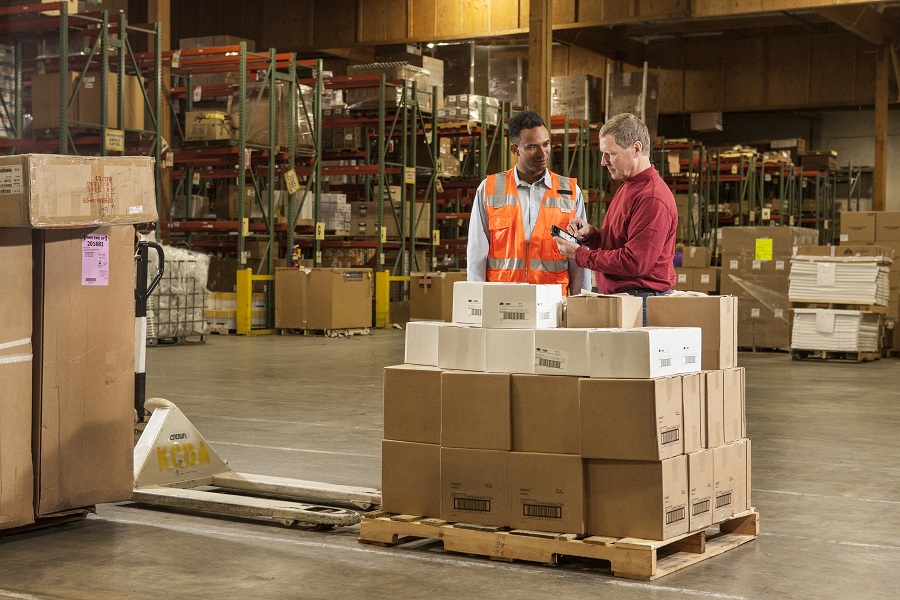A warehouse is a complex ecosystem that relies on careful coordination and well-honed processes in order to run smoothly. Bottlenecks anywhere in the facility can quickly bog down operations across the entire building – and throughout the supply chain.
Warehouse operators should look for ways to improve efficiency and productivity across every aspect of their operation. Flow and speed are critical.
Here, we’ve outlined seven best practices for warehouse operators that can help keep inventory flowing efficiently.
1. Use automatic data collection technology. If your employees are still writing down serial numbers or bin locations on pieces of paper, or retyping information on a keyboard, you are likely reducing their productivity. Automatic data collection systems that use barcodes and/or RFID tags can improve accuracy and speed up both picking and putaway.
Inventory should be scanned at the receiving area, during putaway and picking, and during the shipping process. Barcoded bins and shelf locations can help ensure pickers know exactly where to find items.
Modern barcode scanners make this even easier. Honeywell, for example, offers a wide range of scanners that use imaging technology for scanning both 1D and 2D barcodes. They are built to withstand the challenging environment of the warehouse, and can scan both up close and at a distance – so the same unit can scan item labels and bin/location labels.
2. Standardize operations wherever possible. This is a key component of the Lean approach. Establish standard processes across the board, and make sure employees are trained on those processes. Apply this approach to every function in the warehouse, from receiving to shipping.
Standardization makes it much easier to measure performance and spot problems. It also makes it much easier to train new employees, and makes for an easier transition when a veteran employee leaves or retires.
3. Make safety a priority. Establish a formal safety program and conduct regular safety training. The facility should also be designed and configured with safety in mind.
The benefits of a safety program are twofold. First, frequent accidents and injuries are a drain on productivity. They can cause costly shutdowns and work stoppages. Second, ensuring that your employees have a safe environment in which to work will improve morale and make it clear that you value your team members and their well being.
4. Use bin locations to manage inventory. Almost all distribution and warehouse management software packages utilize bin locations, which allows warehouse operators to quickly and accurately find inventory.
With bin locations, you can place product based on sales volume rather than organizing it by vendor line or size. Doing so can streamline picking by keeping fast movers close to the packing/shipping area. It also makes it easier to train new hires, because they can easily follow the bin location map.
5. Effectively manage returns. The reverse supply chain is much more difficult to manage than its forward counterpart. Returns effect inventory and accounting systems in complex ways.
Warehouse operators need to have clear processes in place for the management and disposition of these returns – and those processes may vary by vendor, since each company has its own requirements relative to inventory, chargebacks, and refunds.
You may need a specialized returns management solution to help automate as much of this process as possible.
6. Use “ABC” analysis to categorize your inventory. Stock moves at different velocities, and warehouse operators should organize inventory based on turns. “A” items are fast-moving priority stock that drive the biggest chunk of revenue and require the closest management and more frequent re-ordering.
“B” items generate less value and volume, and require less frequent stock reviews. “C” items are low value and may move at a lower frequency.
The “A” items should garner the largest share of your attention from a management perspective, and those high-velocity items should be physically positioned close to shipping to reduce the amount of walking required for picking and fulfillment.
Ranking stock this way also helps direct limited management resources more efficiently by targeting the most profitable inventory first. These ratings will change over time based on market conditions, so inventory should be regularly reviewed.
7. Institute a continuous improvement program. Optimizing processes is an ongoing endeavor, not just a project with hard end date. Institute processes that help you continue to identify problems/bottlenecks and create effective solutions. Leaders should walk the floor to identify waste or process deviations, and engage in active problem solving with the staff.
Following these seven best practices can help warehouse operators improve efficiency and, ultimately, ensure high levels of customer service.




